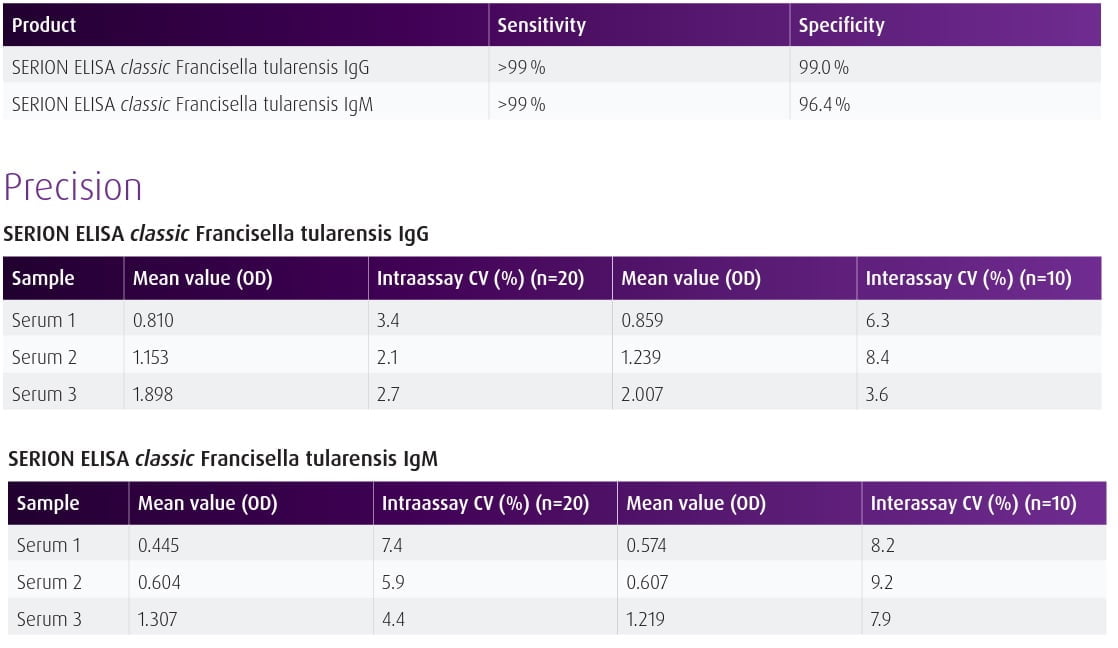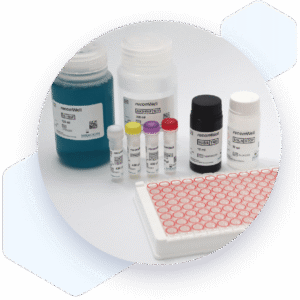| Weight | 1 lbs |
|---|---|
| Dimensions | 9 × 5 × 2 in |
| target | Francisella tularensis reactive IgG |
| species reactivity | Francisella tularensis |
| applications | ELISA |
| assay type | Indirect & quantitative |
| available sizes | 96 tests |
Francisella tularensis IgG ELISA Kit ESR142G
$534.00
Summary
- Virion/Serion Diagnostic Kit for research use (RUO)
- Francisella tularensis IgG ELISA Kit
- Suitable for IgG detection
- Ready-to-use
- 96 tests
Francisella tularensis IgG ELISA Kit ESR142G
| kit | ||||||||||||||||||
|---|---|---|---|---|---|---|---|---|---|---|---|---|---|---|---|---|---|---|
| Assay type Indirect ELISA | ||||||||||||||||||
| Research area Infectious Disease | ||||||||||||||||||
| Sample type Serum, plasma, whole blood | ||||||||||||||||||
Components
| ||||||||||||||||||
| Storage Store at 2-8°C. | ||||||||||||||||||
| Associated products Francisella tularensis IgG ELISA Kit (ESR142G) Francisella tularensis IgM ELISA Kit (ESR142M) |
| target relevance |
|---|
| Organism Francisella tularensis |
| Protein names Francisella tularensis |
| Structure and strains Francisella tularensis is a pathogenic species of Gram-negative coccobacillus, an aerobic bacterium. It is nonspore-forming, nonmotile, and the causative agent of tularemia, the pneumonic form of which is often lethal without treatment. It is a fastidious, facultative intracellular bacterium, which requires cysteine for growth. Due to its low infectious dose, ease of spread by aerosol, and high virulence, F. tularensis is classified as a Tier 1 Select Agent by the U.S. government, along with other potential agents of bioterrorism such as Yersinia pestis, Bacillus anthracis, and Ebola virus. When found in nature, Francisella tularensis can survive for several weeks at low temperatures in animal carcasses, soil, and water. In the laboratory, F. tularensis appears as small rods (0.2 by 0.2 m), and is grown best at 35 37 °C. |
| Detection and diagnosis Detection through culture from peripheral blood, swabs and biopsy material is difficult and can take several weeks. Since it is a highly infectious pathogen, such diagnostic tests are reserved for specialized laboratories. Serological diagnosis can be made by means of ELISA through the detection of specific antibodies. |
Data
Publications
| pmid | title | authors | citation |
|---|---|---|---|
| We haven't added any publications to our database yet. | |||
Protocols
| relevant to this product |
|---|
| ESR142G protocol |
Documents
| # | ||
|---|---|---|
| Please enter your product and batch number here to retrieve product datasheet, SDS, and QC information. | ||
Only logged in customers who have purchased this product may leave a review.




Reviews
There are no reviews yet.